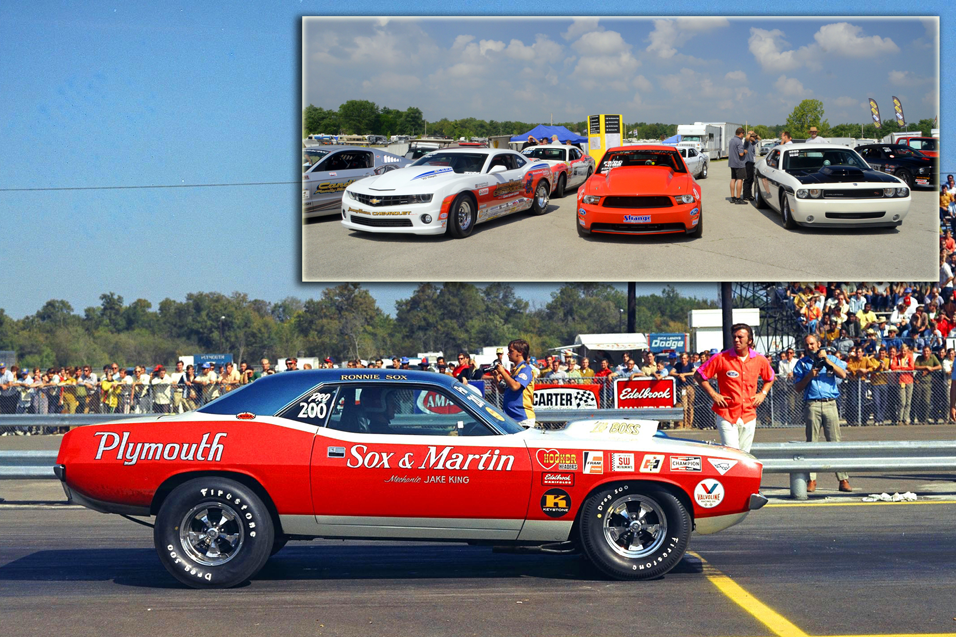News & Analysis

Ronnie Sox and his hemi ’cudas set the stage during the opening seasons of Pro Stock, and the stands were packed at Dallas as he won his only Pro Stock Championship at the 1970 World Finals. Could fan appeal return to doorslammer racing if modern musclecar technology was used in place of the current configuration?
Wither Pro Stock: An Objective Look at the Challenges Faced by NHRA’s Top Doorslammer Class
It was 1970; the new decade had brought about changes in NHRA’s scheme of things, and the biggest of all was the advent of a heads-up doorslammer class. Stock and Super Stock had been divided into two categories in 1967, but factory involvement in the latter had created no end to index racing hijinks and ‘letter of the law’ rules interpretation. The AHRA had created a Pro Super Stock division in 1969 that did away with all but simple weight, displacement and fuel rules. The NHRA followed suit with Pro Stock using a very similar formula in 1970, which was very popular. So when Indy rolled around, there were not 20 nor 50, but no less than 90 Pro Stock entries on hand.
Ninety! And these were the top muscle cars and stars of the day. Mustangs, Camaros, Cudas, Mavericks, Challengers, Cougars, Dusters, even an occasional Firebird or AMC would show up. They raced wheels-up and side-by-side, and Pro Stock was quickly noted for close competition and the personalities of the drivers. At that time, 32 cars made the call for first round at the big events.
It is well remembered that Ronnie Sox dominated those first two seasons of NHRA racing, winning the 1970 crown and losing just two rounds of racing in 1971, including the semifinals of the 1971 NHRA World Finals at Amarillo to let Mike Fons advance to an unexpected World Championship.
To level the playing field, NHRA saw fit to let smaller bodies and small-block engines in for 1972, giving ground to the non-muscle Vegas of Bill Jenkins, the Pintos of Don Nicholson and Bob Glidden, and a variety of subcompact cars racing against the former street machines on a complicated group of weight breaks and cylinder head configuration rules. As a result, Mr. Sox never won another NHRA event title. That decade, numbers of competitors fell off as technology advanced and costs increased, and in the early 1980s, with a successful transition by IHRA and AHRA to a single displacement class model, NHRA settled for its current easy-to-police 500-cid limit.


